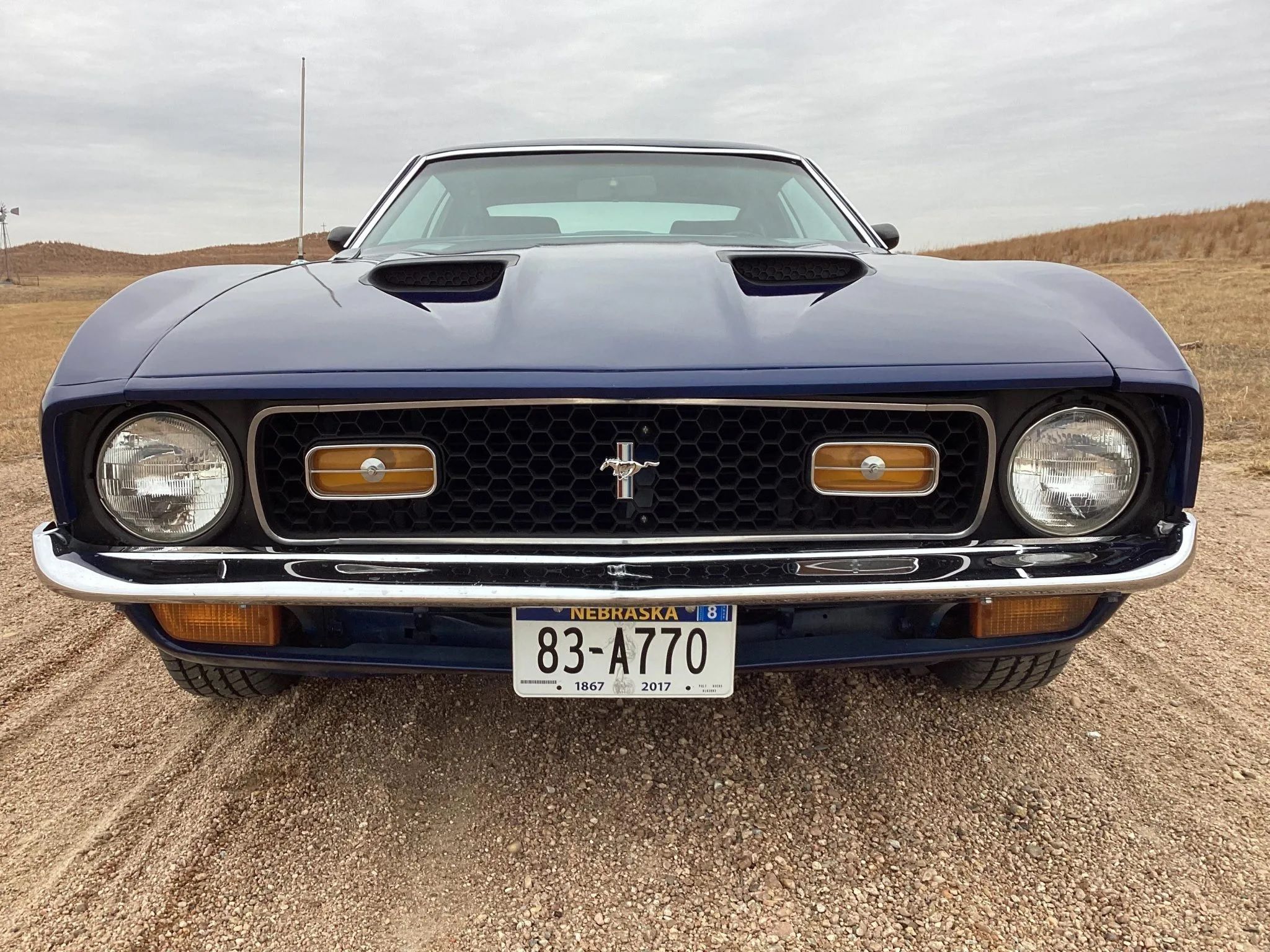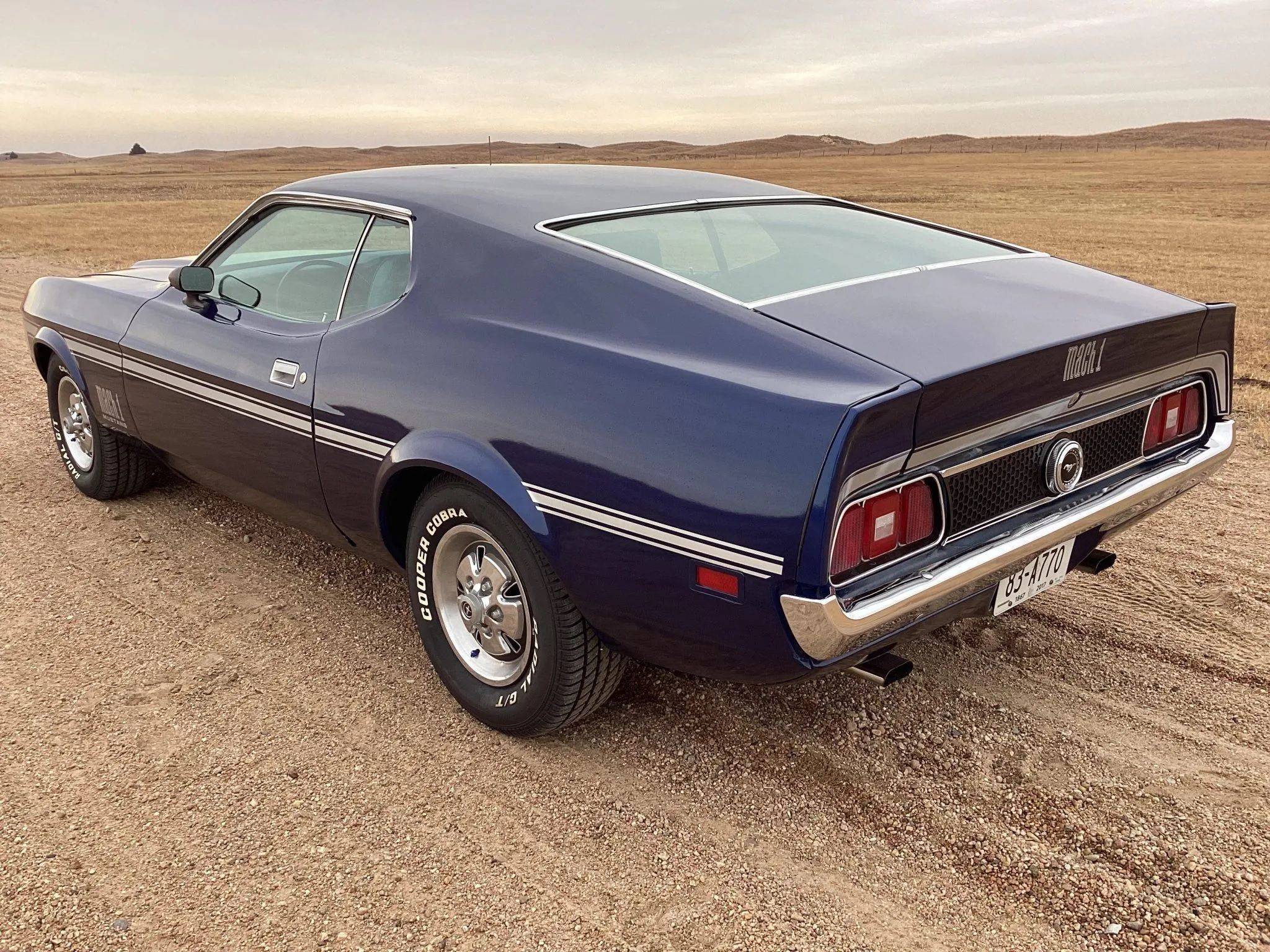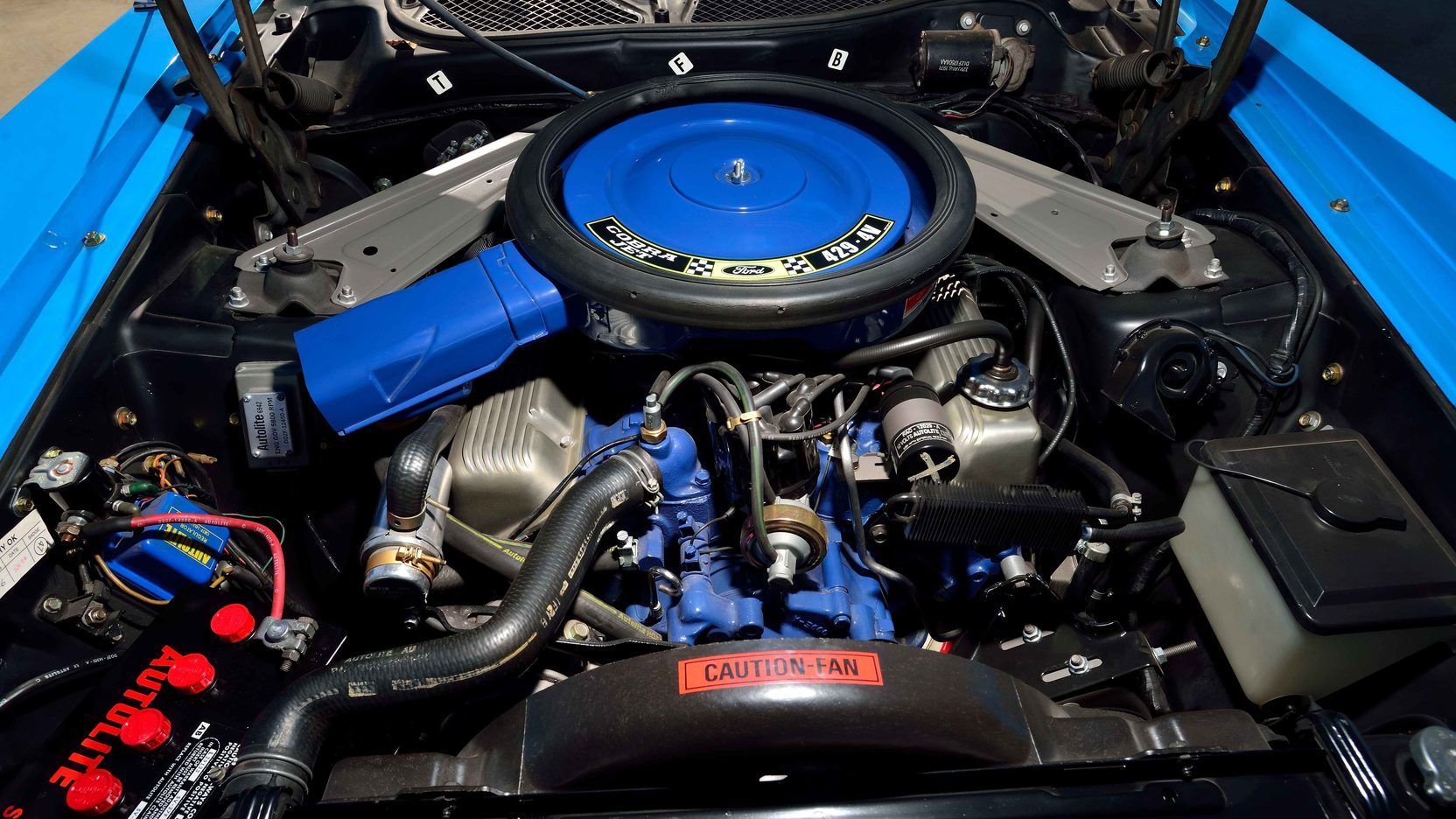Of all the vehicles that the American muscle market has ever offered, the Ford Mustang is the most iconic, powerful, and stylish. At a time when demand for performance muscle cars was high, Ford found a way to brighten the image of its most-treasured pony while aiming at better performance. This legendary muscle car made its debut in the mid-60s and dominated the segment with its over-the-top features. Today, the classic ’60s and ’70s Mustangs are among the least remembered models. Especially after the retro-styled sibling came into the scene.
For the 1971 model year, Ford refreshed their regular Mustang Mach 1 with new appearance upgrades. It also had many engine offerings. The first-generation Mustang Mach 1 became the line’s most powerful variant. It offered a standard 302 V8 under the hood and a range of stronger engines. These ranged from the 351 V8 to the Super Cobra Jet V8 engine. Its new styling cues featured a color-keyed urethane front “spoiler” bumper. It also had unique dual hood scoops, and a sports roof body style, to name a few.
The Ford Mustang Mach 1 was a trendsetting classic that fit the criteria of an ideal muscle car. The 1971 Ford Mustang Mach 1 is one of the most affordable, high-powered classic muscle cars from the ’70s. Let’s take a look at its current price in 2022, and a few things to consider before you take it home.
How Much Does The 1971 Ford Mustang Cost Today?

For a 1971 Ford Mustang Mach 1, produced from 1971 to 1973, you should expect to pay an average of $34,676. As usual, the price depends on the vehicle’s condition and mileage. But in the Mustang’s case, the price can also depend on what’s under the hood. Units with the high-powered Cobra-Jet engines are likely more expensive, with prices going above the $100,000 price point.
Unlike other classic muscle cars, the ‘70s Mach 1 is an easy find since it was a mass-produced muscle car. That said, about 151 units have retailed over the last 5 years, according to classic.com.
Here’s A Guide To Buying The 1971 to 1973 Ford Mustang Mach 1: Brief Buyer’s Checklist

Let’s face it. Every car has its fault. Some vehicles roll out of the production line with issues. Other vehicles develop issues with time, which is the case for most classic cars. For a classic car that, in this Ford Mustang’s case, is more than 5 decades old, it’s bound to develop some issues. In the classic market, knowing issues related to your chosen vehicle can help you out to a great extent. We’ve put together a list of the common issues on the first-generation Ford Mustang Mach 1 (1971- 1973).
Body & chassis
The body is a great place to start your scrutiny. It’s very important to thoroughly check the entire exterior, from the front to the rear quarter panels, for signs of problems. By walking around the car, you’ll easily spot issues like bulges, bubbling, or excessive body filler and dents. One issue that particularly affects the classic Mustang, and many vehicles produced during its time, is rust. Even units that are recently restored can harbor rust in some hard-to-reach spots. Unless the vehicle lived most of its life in a desert region, rust is inevitable. Make sure to check the depth of the rust. Minor surface rust is easy to fix, while the deeper rust can be a tough job, and comes with a heftier price tag. The ideal buy should have minor rust, and no more than a few scratches here and there. Aside from rust, check the body for signs of a previous repair. If you can spot them, for instance, in the form of inconsistent gaps on the paneling, that vehicle underwent a poor accident repair.

Engine & transmission
The heart of the Mustang is a vital place to consider, and it’s probably one of the main reasons you want a Mustang in the first place. As far as we know, Mustangs have the strongest engines muscle cars can offer. But having existed for 50 years, it’s rare to find a Mustang with an engine that performs as well as a new one. You’ll be glad to know that engines of this age are fairly easy to recondition. But of course, this will depend on the damage taken and usage. Listen to the sound of the engine for any signs of inner damage. While you’re at it, make sure to check the transmission system as well. If you’re experiencing slurred upshifts or a slow response to manual downshifts, this means that the system will need reconditioning sooner than later. This issue is still very unusual, as a lot of manual and automatic transmissions on Mustangs are some of the most durable, and can last for decades.
Suspension System
One reason why we love the Ford Mustang so much is because of its great suspension, which offers an ultra-comfy ride. But after so many years, that can be a totally different issue. Over time, the sturdy shock absorbers and front springs can take a pounding, especially from the V8 engine on the Mustang. Groaning ball joints are a common issue. Rear leaf springs can also crack after a while. That said, it’s important to check the suspension system for signs of wear and tear. But they are easy to fix when worn out. Typically, any Ford Mustang that’s been on the road for more than 10 years needs to have its suspension refurbished. It might also need some components replaced.
Read Next
About The Author
